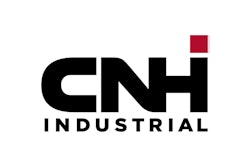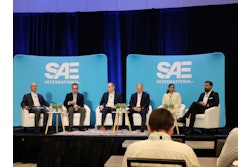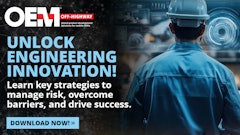
Many of today’s engineers are faced with the same systematic problems. From inventory control, supply chain disruptions and limited production capacity, to lack of clear standards, unplanned downtime, data silos and training gaps, these problems aren’t solved with a handbook and sometimes, aren’t solved with a one-size-fits-all solution.
In the session titled “Examples of Success in Approaching Complex Problems,” which took place during SAE International’s COMVEC 2025, panelists Catrina Mitchell, vice president of International; Laura Gerstner, director, agriculture product quality at CNH; Steve Koeffler, chief validation engineer for PACCAR; and Pablo Velasco, head of R&D business area user experience at Continental México provided success stories on how to leverage team communication, instill a people-centric approach and the importance of providing the right tools in the toolbox for your teams.
For starters, with new technologies comes new challenges, according to Lisa Farrell, director, connected and intelligent systems at Cummins Inc. and moderator of the session.
To overcome many of today’s challenges, companies are encouraged to implement technology validation methods, according to Koeffler, however sometimes these validation tools for emerging technologies may not actually exist.
“Look to incorporate a SWOT analysis across your organization to better understand the capabilities in place and what’s needed to solve the problem,” he adds. “This is especially important when working with new entrants to the industry who aren’t familiar with processes and protocols.”
“While new technologies introduce new challenges, they also represent great opportunities to innovate in how we do things,” Koeffler adds.
For International’s teams, it’s about understanding the vision, and how you innovate around the problem at hand.
“Following a problem statement boxes you in,” Mitchell says. “Ask about what new technologies you can include in your problem-solving and how you’re going to apply the solution. The pain point isn’t always at the problem. It’s sometimes about how the solution is being applied. Execution is where the magic happens. Will you be reactive or proactive?”
What’s more, learning from success and learning from failure are not two separate entities; failure is part of success, Velasco says.
“Finding the root cause of a problem doesn’t mean you have a solution,” he says. “There’s three different ways to approach this. One, recognize that there are different approaches and experiences. The second, challenge your team to go further for a systematic solution, meaning don’t just solve the problem at hand, aim to solve the bigger-picture problem. And third, manage the learning within your system and embed it into all of your processes.”
But, how do companies balance data-driven solutions in retrospect of the engineers’ experience?
Always challenge against the unforeseen problems that could arise down the road.
“Experienced engineers can plan for potential problems that could happen,” Koeffler says. “Data-driven solutions are important, but having experienced people in the room helps to move that process further.”
When trying to solve a complex problem, there’s usually two camps, Mitchell says.
“One camp operates amongst distrust with the data, while the other camp says, this is the way we have to do it, this is the way we’ve always done it. The two camps should validate each other. That’s why it’s important to build that data-driven culture. Utilize data backed by verification of your intuition. Distrust but then prove right,” says Mitchell.
Then there’s the challenge of gathering all of the data but then not knowing what to do with the data.
“Define the problem at hand very clearly and ask how you see yourself at the end,” Velasco says.
At the end of the day though, “more data is always better,” Gerstner says. “If you don’t have enough data, how can you get more data? And how do you handle bad data? Consider data to be in a human sandwich. At the beginning, you have a human entering in the data and at the end, you have a human analyzing and applying the data.”
Regardless of how the data looks, Mitchell says to be intentional with the data. That’s why International created a Data Council, which sets the rules and governance around data, how it’s used and how it’s presented.
And, what happens when corporate management and stakeholders start asking questions about the status of the solution?
Protect the team, Gerstner says. Do so by mapping out the following:
- What do we know?
- What do we not know?
- What have we tried already?
- What do we need from corporate management/stakeholders?
- This is what we’ll keep doing.
- Why is this important?
“You have to provide the right tools in the toolbox to protect the people and the product,” Gerstner says.












